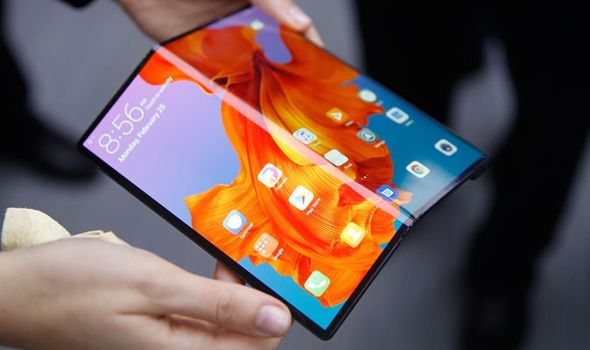
Apple has, since 2010, popularised new product categories, as it did with the iPad for tablets, but now the rest of the tech industry is forging ahead and it hasn’t quite kept up.
Patience is low, enthusiasm is high and, judging by the Huawei Mate X unveiled last month, product design and development are already at an advanced stage. Foldable phones and the return of the slider phone will be the hottest trends this year. Let’s take a look at the upcoming foldable phone devices we have heard about so far:
Huawei Mate X
When the Huawei Mate X folding phone goes on sale in July, it will hit shelves at an eye-watering $2,600 (Sh260,000). Unfolded, the Mate X is a slim eight-inch tablet, but fold the device, and you’ve got two screens — a front-facing 6.6-inch screen and a 6.4-inch panel on back. That screen can double as a mirror when you take a photo. The folded Mate X is 11mm thin; there’s no gap between the screens, so it should fit easily into a pocket. It’s not all looks though, the Huawei Mate X will have the company’s in-house Kirin 980 processor and Balong 5000 modem, which is able to connect to the upcoming 5G networks. It also has 8GB of RAM and 512GB of internal storage, a Leica triple camera and a two batteries that, combined, will be 4,500mAh in size.
Samsung Galaxy Fold
Samsung finally made good on years of hype with the Galaxy Fold, which is slated for release on April 26. It has a starting price of $1,980 (Sh198,000). This version of the Fold will connect over LTE, but Samsung is also offering a 5G-ready version. The 5G version doesn’t have a release date, though, and its price will likely be much higher. The phone, when closed, can be used as a smartphone with a 4.6-inch HD external screen. When it unfolds to its full size, it will act as a tablet, thanks to its 7.3-inch display. The Samsung Galaxy Fold will also have an unnamed 64-bit 7nm processor, 12GB of RAM and 512GB of storage inside, along with two batteries at 4,380mAh. It will additionally have six cameras: three on the back, one on the front and two on the inside.
Royole FlexPai
The world’s first foldable phone already debuted in November 2018. It isn’t as polished as Huawei or Samsung’s but it’s been developing flexible display technology for many years. China-based Royole surprised the industry in late October by announcing the release of the Royole FlexPai. In its unfolded mode, it serves as a 7.8-inch tablet. Through the use of Royole’s flexible film technology, the sides of the FlexPai can fold 180 degrees, making each display face out. Each side has a display of about four inches. In addition, the spine of the flexible display also works as a third small display for notifications. The display itself can fold over 200,000 times before it stops working, so it should last several years. Its base model costs $1,318 (Sh132,000).
Oppo
Oppo, another China-based smartphone company, doesn’t officially have a folding phone yet, but a folding phone prototype was seen briefly at last month’s Mobile World Congress 2019. According to reports, there’s not too much known about this phone, but it looks like the hinge goes the same way as the Huawei Mate X. Oppo vice president of Chinese sales and marketing, Brian Shen, said the foldable phone could enter mass production if the firm sees enough customer demand.
Others
Motorola, now owned by Lenovo, may resuscitate its legendary RAZR model in the form of a foldable phone. There’s also Xiaomi’s folding phone that’s still in the prototype stage. It’s eye-catching with a double-folding design where the top and bottom of the tablet-sized screen fold down, leaving you with a compact chunky smartphone. LG said in October 2018 it plans to join the foldable phones race, but its president, Kwon Bong-seok, recently said it would be premature to come out with a folding device.
 The Standard Group Plc is a
multi-media organization with investments in media platforms spanning newspaper
print operations, television, radio broadcasting, digital and online services. The
Standard Group is recognized as a leading multi-media house in Kenya with a key
influence in matters of national and international interest.
The Standard Group Plc is a
multi-media organization with investments in media platforms spanning newspaper
print operations, television, radio broadcasting, digital and online services. The
Standard Group is recognized as a leading multi-media house in Kenya with a key
influence in matters of national and international interest.
 The Standard Group Plc is a
multi-media organization with investments in media platforms spanning newspaper
print operations, television, radio broadcasting, digital and online services. The
Standard Group is recognized as a leading multi-media house in Kenya with a key
influence in matters of national and international interest.
The Standard Group Plc is a
multi-media organization with investments in media platforms spanning newspaper
print operations, television, radio broadcasting, digital and online services. The
Standard Group is recognized as a leading multi-media house in Kenya with a key
influence in matters of national and international interest.


